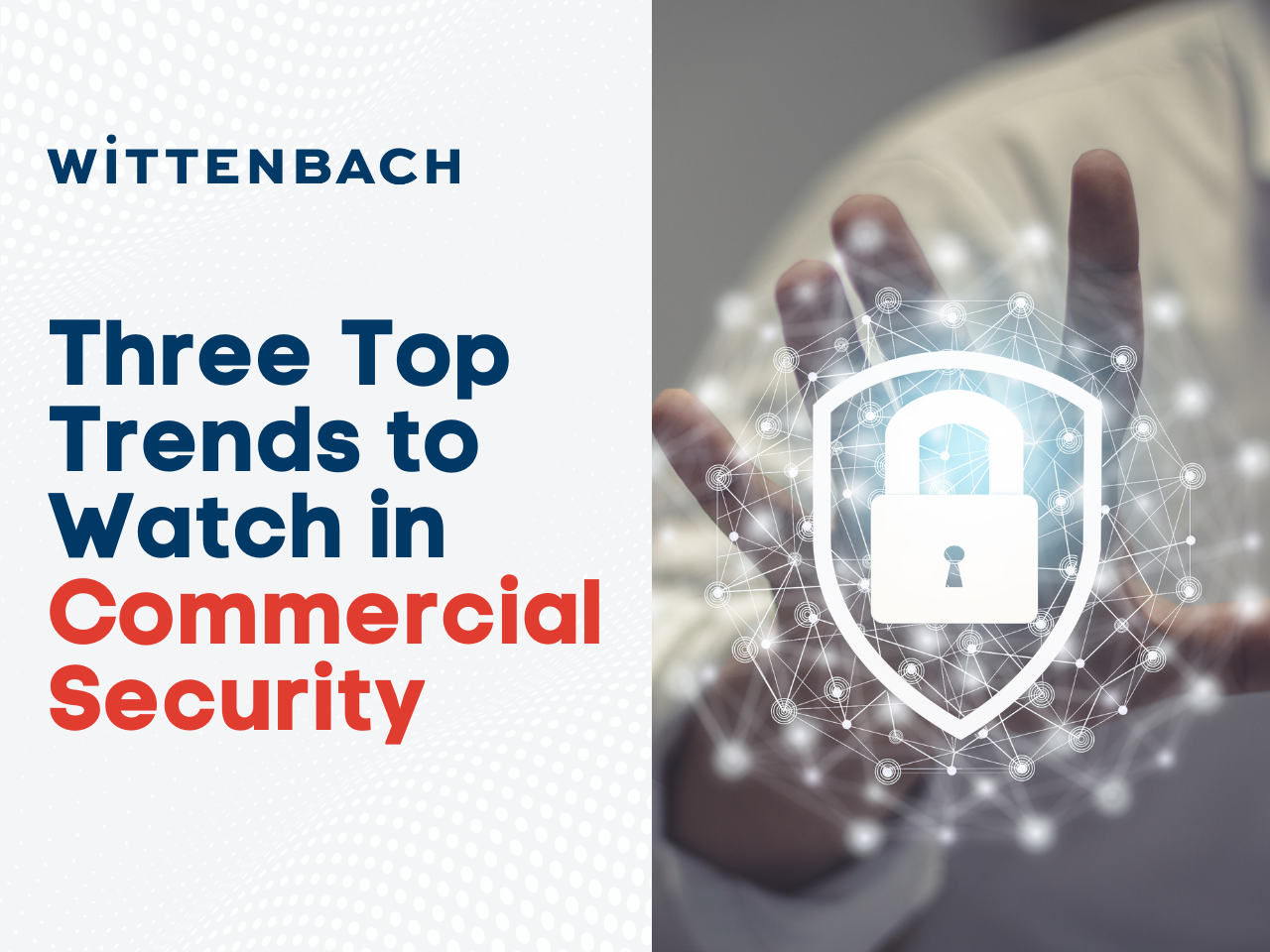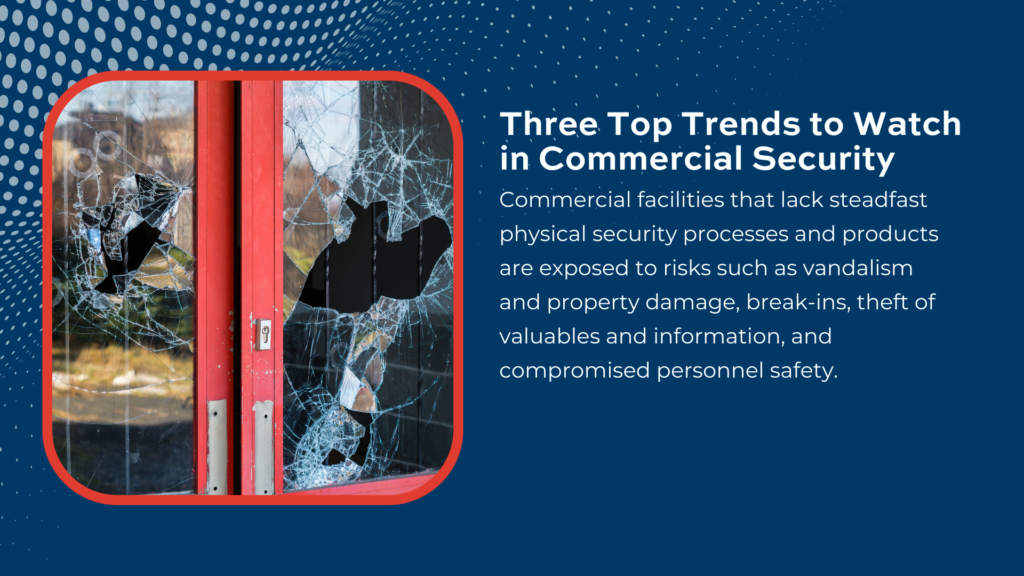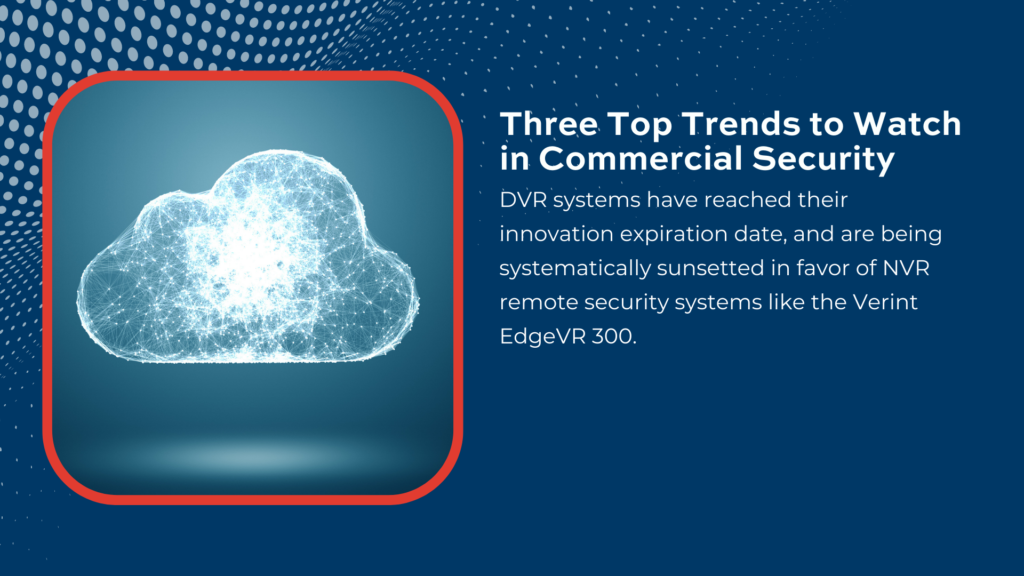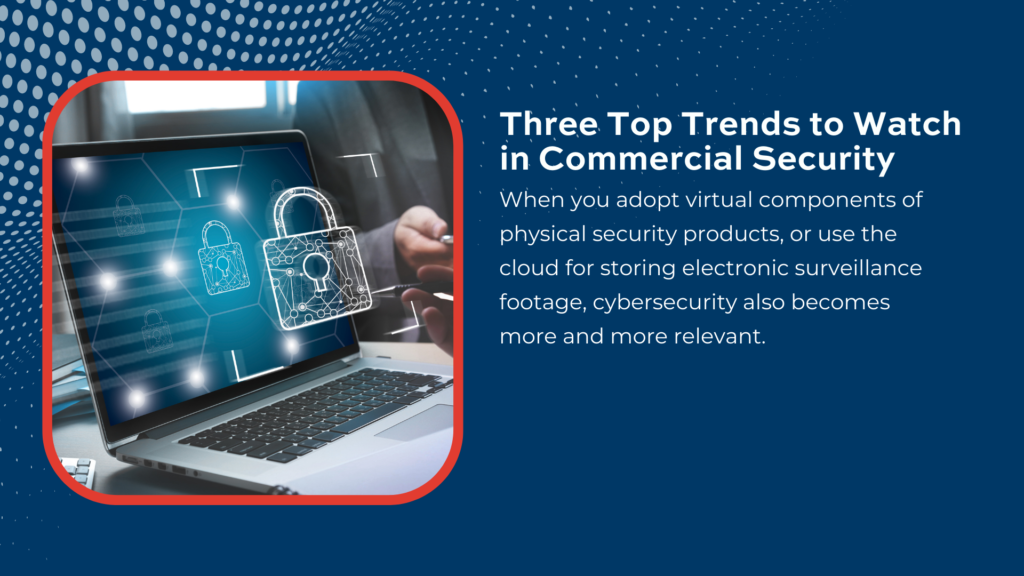It is important to understand the kinds of physical and electronic security methods that commercial facilities use, in order to understand where upcoming trends and innovations lie. Not every type of commercial space has the same needs; naturally, the requirements are different among hospitals, retail centers, sports and entertainment venues, manufacturing plants, warehouses, transportation hubs, and so on. The lives in each facility should be protected, but the other security considerations vary: internal and external crime deterrence, protection of information, remote security management, protection of cash and valuables, and foot traffic control.
Most businesses and facilities strive to follow security best practices, including the development of a holistic strategy for those engineering security in your buildings. This incorporates physical, electronic, and cyber security, making note of vulnerabilities, maintenance plans, and standard operating procedures for employees to follow in the unlikely event of a security breach. This plan also must account for security during normal operating hours, as well as outside them.
Microsoft says, “Traditional security models have focused on layered perimeter defences and building ‘better walls.’ The world has changed. Today, organizations need to have an always-on and multifaceted approach to security […] Preventive security measures are no longer sufficient, and you must now complement them with detection and response.”
What kinds of security does a commercial facility need?
Physical security is a foundational pillar of Wittenbach’s business, and our approachable experts deeply understand the unique security requirements of commercial spaces. With time-tested experience, they can also help you to anticipate risks and pitfalls of which your organization may not have been aware. Commercial facilities that lack steadfast physical security processes and products are exposed to risks such as vandalism and property damage, break-ins, theft of valuables and information, and compromised personnel safety.
Electronic security is another major Wittenbach focus, and it is our fastest-growing product pillar. Video surveillance systems, such as innovative NVRs (network video recorders), equip commercial buildings with remote security and “eyes” both inside and outside the facility, often encompassing areas or vantage points that humans cannot physically monitor. Wireless intrusion alarms are another electronic feature that can trigger an extremely loud noise when an intruder enters your building, and if the alarm is monitored, the agent can determine whether it was a false alarm or if emergency authorities should be notified.
Three top commercial security trends to watch in 2023
There are many advancements developing in the security space, as new technology emerges and aims to outpace criminal efforts. However, we will focus on commercial security trends that are already in sight, but require thought, planning, change management, and adoption to successfully bring into your business.
1. Access control with virtual components: Fleeting are the days in which you must be physically present to lock and unlock your commercial facilities. With cloud-based components such as the DMP Virtual Keypad, you and those employees whom you carefully select for access can lock and unlock your facilities at any time, from anywhere, on virtually any mobile device. This virtual element saves time and cost, as your team can accomplish these tasks across geographies within the same app–eliminating the need to travel from site to site to ensure buildings are secure or open them for operations.
2. Cloud-based NVR storage: Historically, video surveillance footage from DVR (digital video recorder) systems was stored to a local hard drive which could only be accessed and viewed on-site. These DVR systems have reached their innovation expiration date, and are being systematically sunsetted in favor of NVR remote security systems like the Verint EdgeVR 300. With a wireless connection and high-resolution footage, migrating from local storage to cloud-based storage provides several benefits.
The first benefit is accessibility, as again, your security teams can monitor and revisit footage across multiple sites from any remote location. Another benefit is storage capability; since higher resolution video takes up a significant amount of space, it is easy and cost-efficient to expand your cloud-based server space, as opposed to buying additional physical servers to house this data for the legally mandated amount of time. This also means that as your operations grow and commercial sites expand, your cloud storage can scale accordingly.
It is important to note that with any migration to a cloud server, cybersecurity measures should also be in place to ensure the video data is properly encrypted and protected from computer-related threats or erasures.
3. Increased points of security integration. As evidenced above, when you adopt virtual components of physical security products, or use the cloud for storing electronic surveillance footage, cybersecurity also becomes more and more relevant. Not only will your business need to assign the appropriate levels of access to your security professionals, but you’ll need to keep the “bad guys” out–insulating your data and sensitive information from would-be hackers.
As these security intersections increase with technological advances, it is important to ensure that your security teams are communicating more fluidly than ever. In a recent blog post, we explained ways to drive that collaboration and ensure that new features can be seamlessly implemented and maintained.
In Summary
Adopting new commercial security trends can be a daunting task if your organization is just scratching the surface. It is important to remember how all of these physical, electronic, and cybersecurity components and teams combine, and to consider your projects through each lens prior to deploying new products. Wittenbach is ready to help; contact us for additional expertise and tips for moving your commercial security suite forward.




